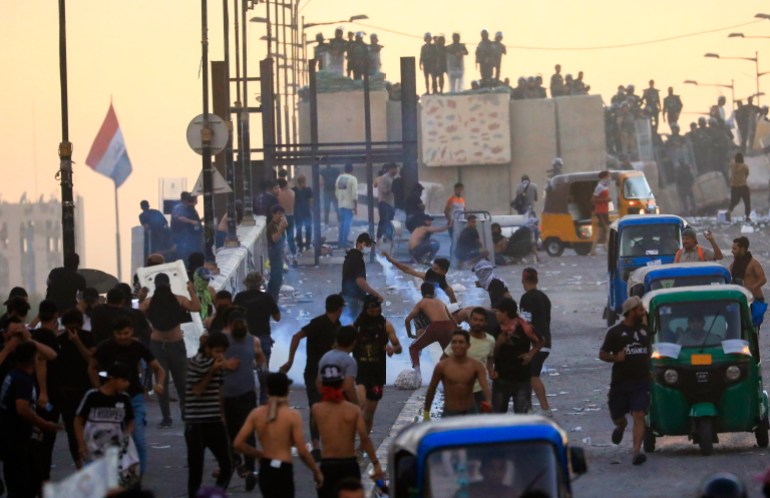20 years on, was removing Saddam Hussein worth the war in Iraq?
Twenty years after the US-led invasion of Iraq, the effects of war and occupation still reverberate through the region.
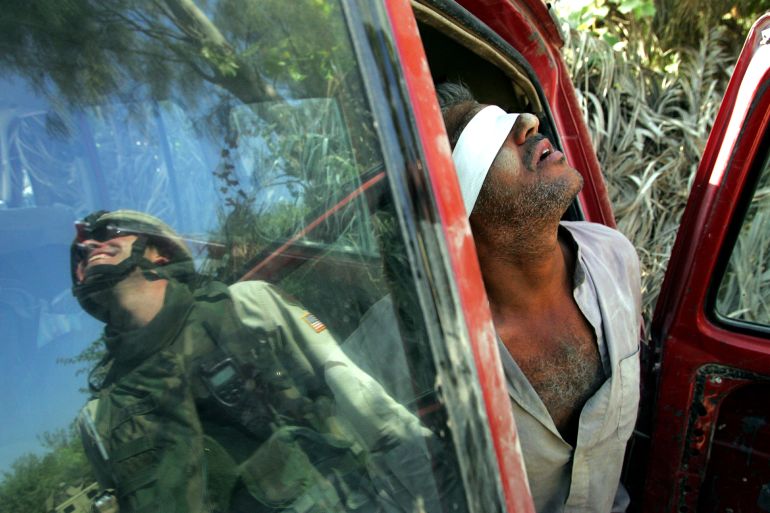
Exactly 20 years ago, on March 20, 2003, the United States launched a ground invasion of Iraq, promising to end the rule of President Saddam Hussein and destroy alleged weapons of mass destruction (WMD) in the oil-rich country.
Air operations had begun the night before, as US President George W Bush announced in a televised address: “At this hour, American and coalition forces are in the early stages of military operations to disarm Iraq, to free its people and to defend the world from grave danger.”
Keep reading
list of 3 itemsWhat is the legacy of the US-led invasion in Iraq?
Iraqis still haunted by Saddam-era disappearances after his fall
However, US forces, mainly backed by troops from the United Kingdom, never found weapons of mass destruction.
And although Saddam was captured, tried, and hanged, the country remains deeply scarred by conflict, marred by economic devastation and political upheaval, and under the sway of Iranian and American influences.
With more than 200,000 Iraqi civilians and 4,500 US soldiers killed, and chaos and instability gripping the whole region as a result of the invasion, questions over why this war was waged in the first place remain potent.
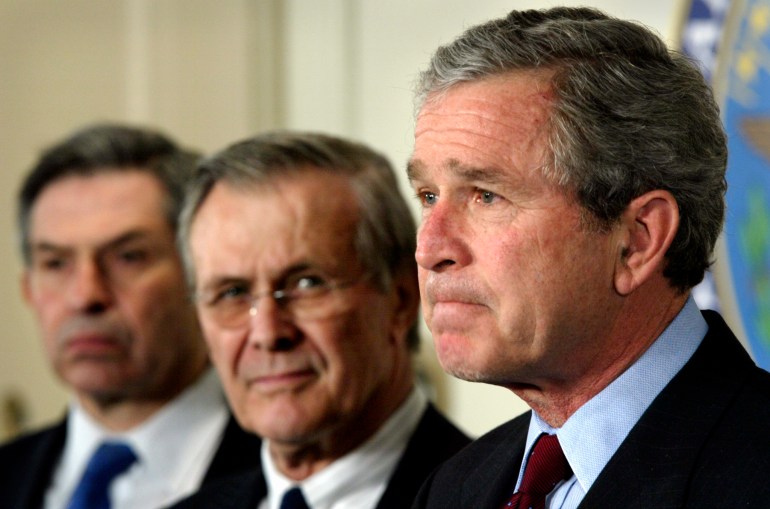
The case for war
US politicians and ideologues began to lay the foundations for the occupation of Iraq years before it happened.
After Saddam launched an invasion of his oil-rich neighbour, Kuwait, in 1990, US President George HW Bush, the younger Bush’s father, declared his intention to impose “liberal democracy” in Iraq, opening a floodgate for US neoconservative politicians who pushed for Saddam to be deposed.
The decision to go to war was driven by security concerns engendered by the 9/11 attacks in 2001 and mixed with ideological motives to liberalise and democratise Iraq and the region.
The US-led invasion was also closely tied to Iraqi exiles in the West, who pushed for Saddam’s removal. However, in the post-war era, exiles based in Iran were able to take advantage and dominate post-war Iraqi politics.
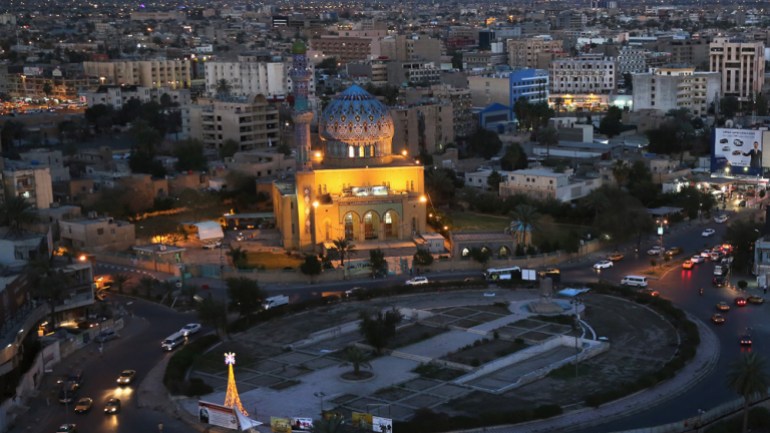
Capturing Baghdad
American, British and other coalition forces invaded Iraq from Kuwait on March 20, 2003, quickly crushing the regular Iraqi military, and chasing Saddam out of power.
Three weeks later, on April 9, US troops seized Baghdad. Together with Iraqi civilians, they toppled a statue of Saddam in Baghdad’s Firdos Square – a historic moment that became symbolic of US victory as it made headlines global.
On May 1, Bush declared “mission accomplished” on board the USS Abraham Lincoln aircraft carrier, and ended major combat operations in Iraq. Lawlessness, which had quickly spread across the country highlighting the failure of US troops to bring order, was dismissed by US government officials as not serious.
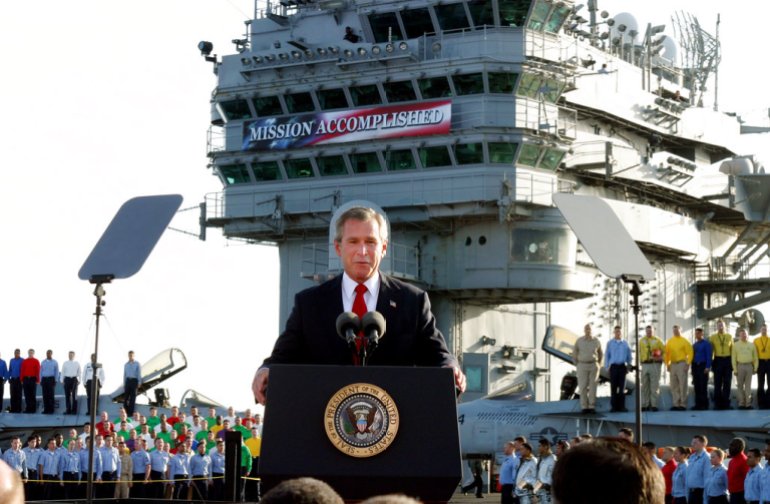
No weapons of mass destruction
Before the end of 2003, US troops captured Saddam, who was hiding in a hole near his childhood home in Tikrit. He was later tried by an Iraqi court and executed for his role in mass killings and crimes against humanity.
The date chosen for his execution, December 30, 2006, which also happened to be the first day of the Muslim festival of Eid al-Adha, has been controversial ever since.
Shortly after Saddam’s capture, the Bush administration conceded that its pre-war arguments about the presence of stockpiles of chemical, biological and nuclear weapons in Iraq were unfounded.
A presidential commission concluded in 2005 that US intelligence on Iraqi WMD was completely flawed, and “not one bit” of evidence was there. The testimony and accounts of defectors and members of the Iraqi National Congress were ultimately found to be unsubstantiated accounts.
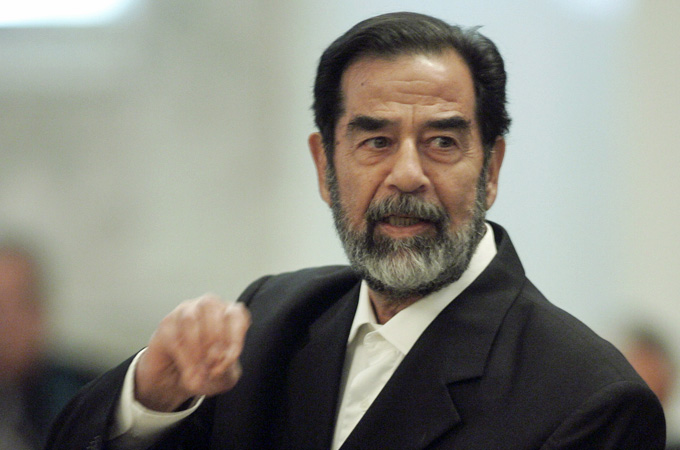
Transitional phase
In May 2003, the head of the Coalition Provisional Authority, Paul Bremer, disbanded the Iraqi army and intelligence services and barred the long-ruling Baath Party from participating in the government formation process. The decision alienated hundreds of thousands of trained men and created a security and governance vacuum in the country that devastated it for years.
The transition from US to Iraqi rule in the mid-2000s saw the killing of tens of thousands of Iraqis, the launch of an al-Qaeda-led armed uprising, the outbreak of a sectarian civil war, and eventually, the rise of ISIL (ISIS).
Elections, sectarian violence
In the aftermath of the fall of Saddam, who was accused of sectarian oppression against Iraq’s Shia and Kurdish groups, the Provisional Authority was preoccupied with creating an ethno-sectarian balance in the country.
It used the muhasasa, or sectarian quota system, to select Iraq’s first post-2003 governing body – the Iraq Governing Council (IGC) – and provide proportional government representation among the country’s Shia, Sunni, and Kurdish groups.
While the system gave political and economic power to parties that came to dominate Iraqi politics post-2003, one of the major ills of the muhasasa system was how it deepened sectarian divisions, which continue to reverberate through Iraq and the region until today.
Despite outbursts of violence, Iraqis voted for their first, full-term government in 2005, giving the Shia majority control of parliament. Under the governing system adopted after the introduction of a new constitution in 2005, the prime minister was a member of the Shia Muslim majority, the speaker a Sunni, and the largely ceremonial role of president was held by a Kurd.
The first prime minister, Nouri al-Maliki, who dominated Iraqi politics for years, had close ties to Tehran and links to armed militias. His government was in power during an era of sectarian and authoritarian policies.
The failure of successive governments to strike an accord with Iraq’s Sunni population and the presence of corrupt and ineffective state institutions were key factors in the rise of sectarian violence across the country. Sunni rebellions intensified in Anbar and Fallujah as violence by followers of Shia religious leader Muqtada al-Sadr surged in the south.
Some suggest that a heavy-handed security response in Sunni areas radicalised many in the community, some of whom then supported ISIL. Others say that some Sunni could never accept that they no longer dominated Iraq as they did under Saddam.
ISIL strengthened its grip as the withdrawal of US troops in 2011 left a security void in the region. It eventually declared a so-called “caliphate” over large swaths of the country in 2014, before being largely defeated by 2017 after a gruelling military campaign, once again involving the US.
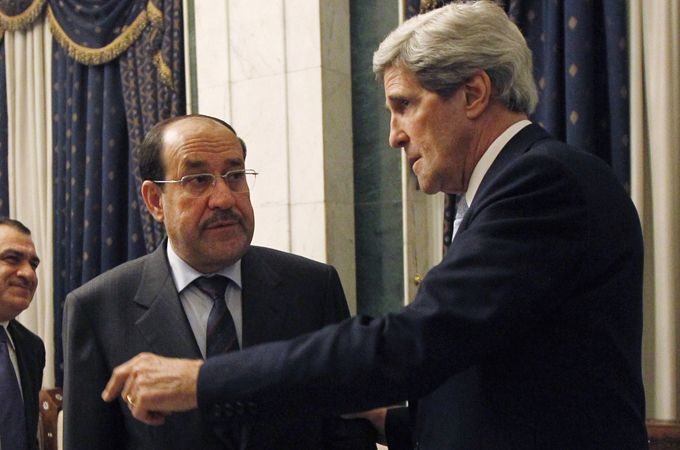
Uncertainty prevails
In October 2019, the largest protest movement in post-2003 Iraq unseated the government and forced parliament to adopt a new electoral law. Security forces and paramilitary groups killed more than 600 protesters during the uprising and have continued to target activists since then.
The unprecedented protests, which lasted for months until the introduction of coronavirus restrictions in October 2020, came in response to the repression of dissent by successive governments and the control of paramilitaries linked to political parties that have discouraged reform and increased risks of civil strife.
However, in today’s Iraq, the government is formed by a coalition that obtained less than 15 percent of the electorate vote. To many Iraqis who joined the protests, it represents an alliance of self-serving political groups and armed factions that have restricted civil liberties.
That has led many Iraqis to support Shia leader al-Sadr, a self-declared Iraqi nationalist, whose forces have been accused of carrying out some of the worst violence in the post-2003 Iraqi civil war.
Violence between his supporters and rival Shia factions last August left 30 dead and made it clear that, despite the strides Iraq has made, it remains inherently unstable, two decades on from the invasion that was meant to usher in a new era.
